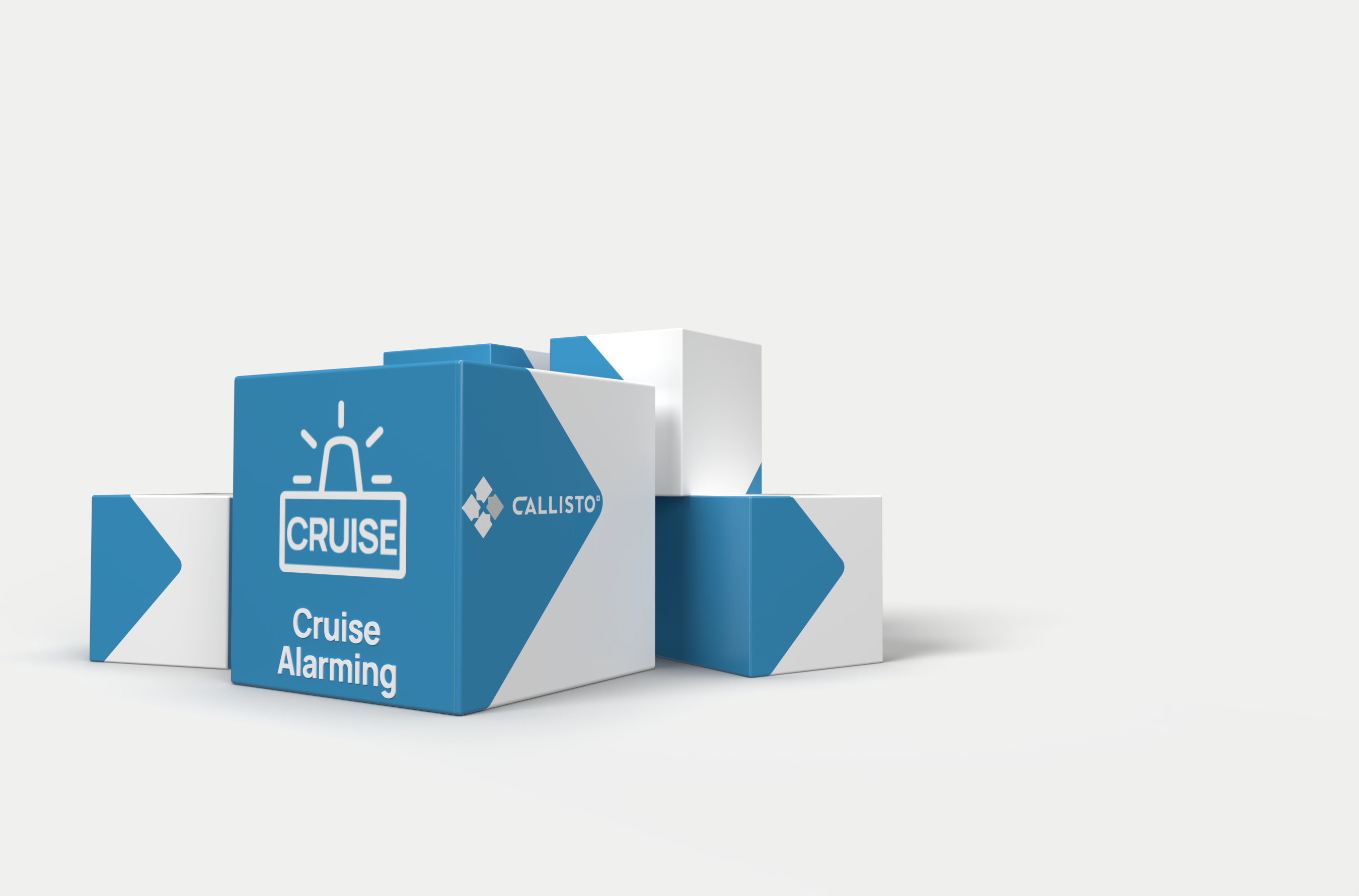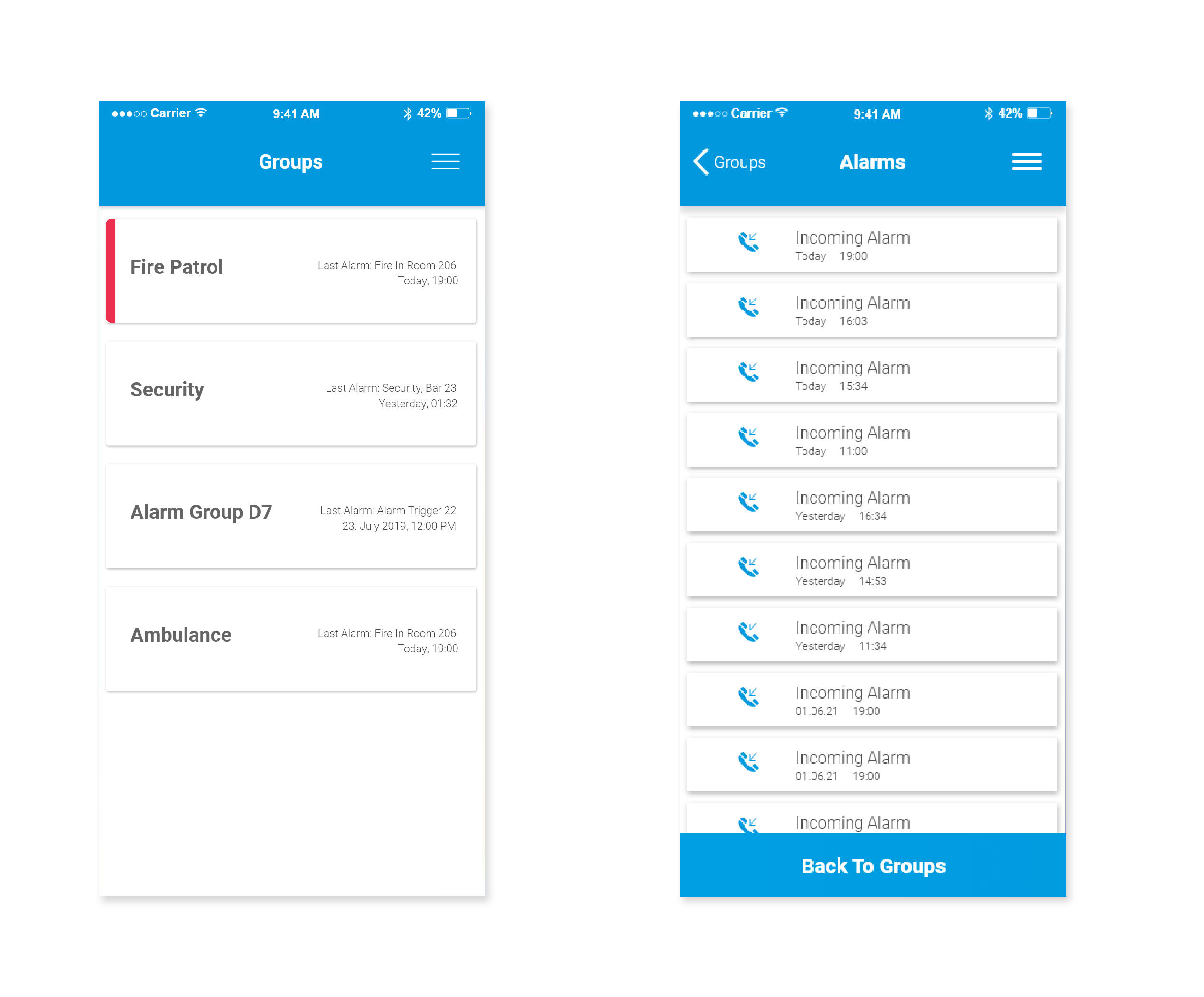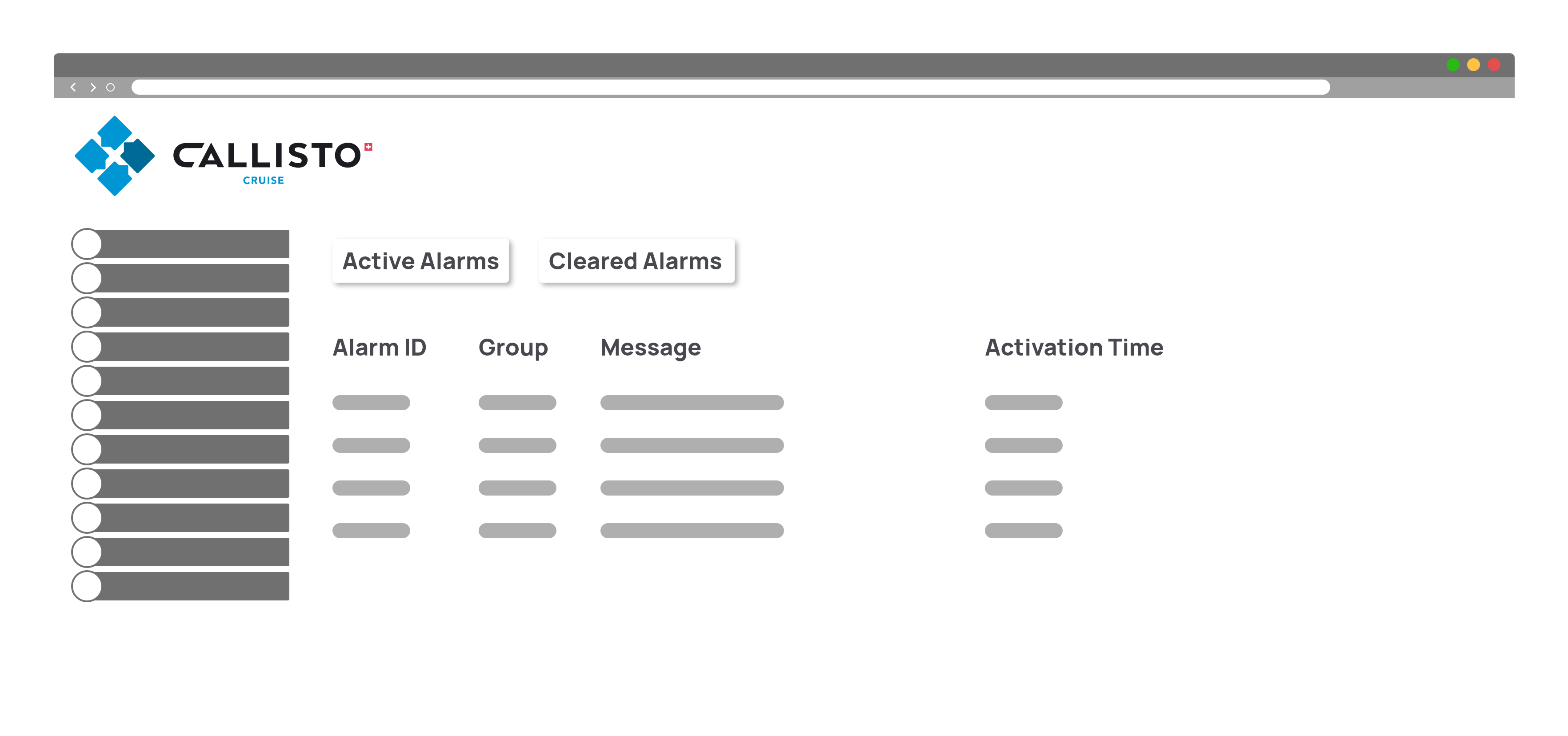| Features from A–Z | Description |
| Alarm button | Alarm buttons are typically connected to Cruise Alarming via ESPA interface (4.4.4 or X) and distributed via alarm group message and defined ringtone. |
| Alarm distribution | The alarm distribution takes place in the impact procedure. In addition, repetitions can be configured. |
| Alarm receiver | Text messages and definable ringtones to (XML-enabled) Cisco phones and smartphones, pre-recorded voice messages/announcements are supported as recipient types. |
| Alarm triggers / sources | Cruise Alarming processes alarms from a wide variety of sources such as ESPA 4.4.4 via COM ports, ESPA-X clients, Cisco Phones, via the web GUI (manually), REST web services, and through the Safety Monitoring and Control System (SMCS). |
| Alarm types | Be it alarms for information, action or for monitoring, alarm buttons, fire alarms, elevator alarms, SPA alarms, nurse call alarms, etc., to individuals or groups, for every use case Cruise Alarming has a solution. |
| Cisco Phone Services | The alarm can be triggered by a phone button using Cisco Phone Services and distributed via alarm group message and defined ringtone. |
| Configuration | The detailed configuration of the Cruise Alarming module is done with administrator rights via the Callisto web interface. |
| Deployment | The Cruise Alarming module is licensed as an optional module and uploaded to the Callisto platform with the Cruise package during the initial installation. Prepared as an appliance image (OVA), the Callisto system can be installed on any virtual machine or physical server. |
| Elevator alarms | Elevator alarms are typically connected to Cruise Alarming via ESPA interface (4.4.4 or X) and distributed through alarm group messages and defined ringtones. |
| ESPA-Protocol | Cruise Alarming processes alarms from ESPA 4.4.4 sources via COM ports or ESPA-X clients. |
| Fire alarms | Fire alarms are typically connected to Cruise Alarming via ESPA interface (4.4.4 or X) and distributed via alarm group message and defined ringtone. The Cruise Alarming Call2SMCS module allows the SMCS to send special events (e.g., fire alarm calls) via ESPA or proprietary protocols, and Callisto calls the alarm recipients and plays a pre-recorded message (e.g., fire warning). |
| Global number plan (E.164 support) | E.164 numbers supported |
| green-IT | Lowest resource requirements in the industry with the highest performance: 2 to 8 CPUs, 2 to 6 GB RAM, 80 GB HD, up to max. 1’000 parallel calls per image. |
| High Availability | Yes |
| Mobile phones | The Callisto Cruise Alarming mobile smartphone application extends the functionality of Module Cruise Alarming by providing secure, unique alarm reception and a clear alarm history for alarm participants. Currently, Android smartphones are supported, iOS on request. |
| Nurse call alarms | Nurse call alarms are typically connected to Cruise Alarming via ESPA interface (4.4.4 or X) and distributed through alarm group messages and defined ringtones. |
| Provisioning | Manually or automatically from Cisco UCM through AXL or Microsoft AD, LDAP/OpenLDAP system, and CSV files. Web services (REST) supported. |
| Reliability | Apart from the stability of the Callisto, the Callisto system can be designed to be highly available. |
| Reporting | Each alarm is recorded separately in Cruise Alarming, as an active alarm, and as a processed or deleted alarm and can be searched using flexible search criteria. |
| REST interface | Cruise Alarming also processes alarms via REST web services. |
| Scalability | Up to 960 parallel calls on one Callisto appliance. Additional instances supported. Unlimited number of alarm sources or alarm participants. Parallel alarms depend on the number of available lines at the alarm time. |
| Security | https, SIPS, Passwort- und PIN-Sicherheit, Appliance-Sicherheit, integrierte Firewall |
| Smartphone support | The Cruise Alarming mobile app for securely receiving text alerts runs on Android smartphones. An iOS app for Apple smartphones is available on request. |
| Smartphones | The Callisto Cruise Alarming mobile application extends the functionality of Module Cruise Alarming by providing secure, unique alarm reception and a clear alarm history for alarm participants. Currently, Android smartphones are supported, iOS on request. |
| SMCS alarms | The Safety Monitoring and Control System (SMCS) can transfer an alarm to Cruise Alarming for further processing by a defined interface. In the event of an alarm, these are distributed as predefined announcements by Cruise Alarming to the corresponding alarm groups. With the Cruise Alarming SMCS module, alarm calls are also passed to the SMCS via Callisto. In addition, module Cruise Alarming Call2SMCS allows SMCS to send special events (e.g., fire alarm calls) via ESPA or proprietary protocols, and Callisto calls the alarm recipients and plays a pre-recorded message (e.g., fire warning). |
| SPA alarms | SPA alarms are typically connected to Cruise Alarming via ESPA interface (4.4.4 or X) and distributed via alarm group message and defined ringtone. |
| Supported phones as alarm receivers | Cruise Alarming primarily supports all (XML-enabled) Cisco phones and smartphones with the Cruise Alarming Mobile app for text alerts, or any alternative phone in the UCM environment for receiving SMCS announcements, depending on the use case. |
| Supported phones as alarm triggers | Alarm triggers can be any Cisco phone supported by Cisco Phone Service. |
| Text messages/alarms | Cruise Alarming supports Cisco Phone XML push messages to Cisco phones or via Cruise Alarming mobile app smartphones for text alerting. |
| Voice Protocols and Codecs | Both codecs are supported based on the SIP protocol, G.711 and G.729. |
| Web-GUI | The Callisto web GUI is not only used for alarm configuration and alarm overview but also for manual triggering of alarms. |
Highlights
Diverse Alarm Sources
Cruise Alarming processes alarms from a wide variety of sources such as ESPA 4.4.4 via COM ports, ESPA-X clients, Cisco Phones, via web GUI (manually), REST web services, and the Safety Monitoring and Control System (SMCS).
System Alarms
Any system that supports ESPA or REST protocols, such as elevators, SPA alarms, nurse calls, etc., can be easily integrated as an alarm generator/transmitter.
Reliable Notification
All alarm group participants reliably receive the alarms as messages and defined ring tones on the Cruise Alarming Mobile App or (XML-enabled Cisco) phones.
Alarm Groups
Individual alarm groups can be defined for each particular alarm, and the respective subscribers can be alerted with the message on the corresponding terminal.
Smartphone App
The smartphone app Cruise Alarming Mobile was designed and developed for the safe and clear reception of alarm messages on board the ships.
SMCS Integration
The Safety Monitoring and Control System (SMCS) can transfer an alarm for further processing through a defined Cruise Alarming interface.
Exact Reporting
Each alarm is recorded separately as an active alarm, as well as a processed or deleted alarm, and can be searched for using flexible search criteria.








